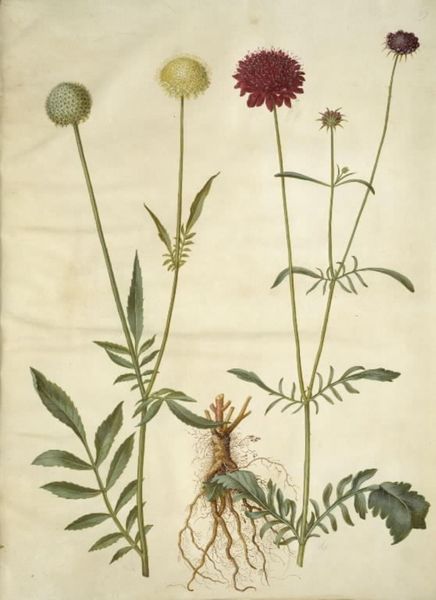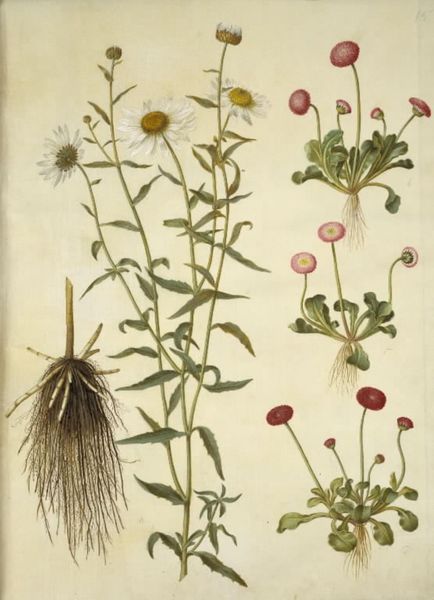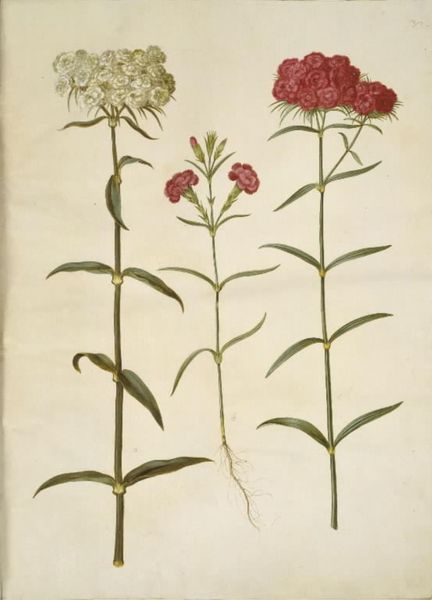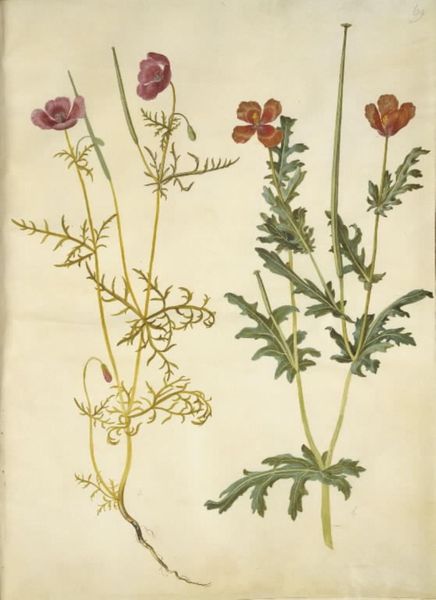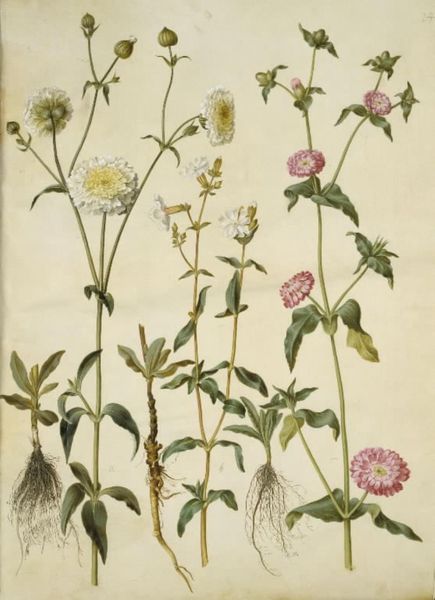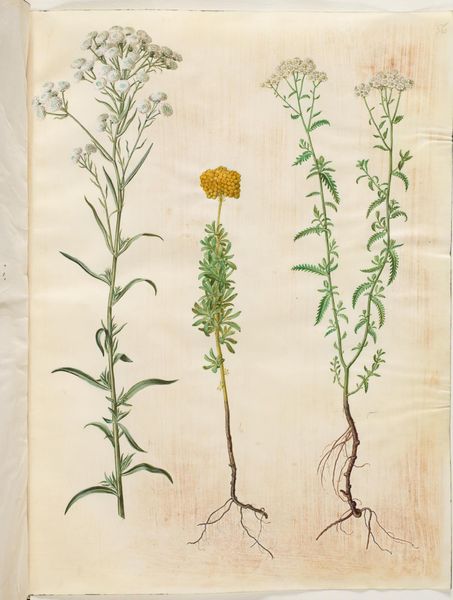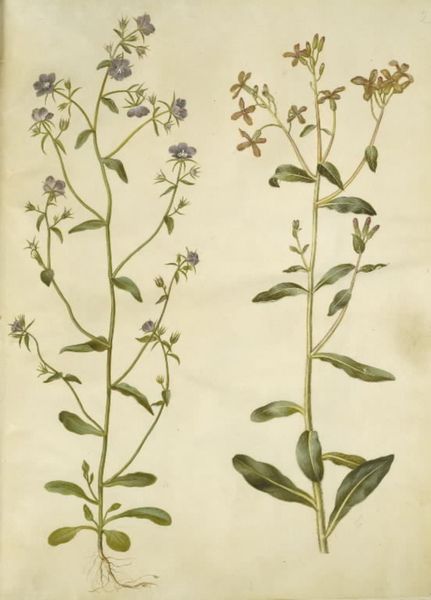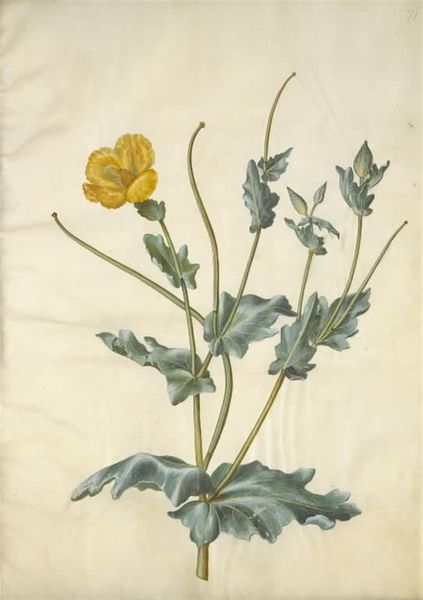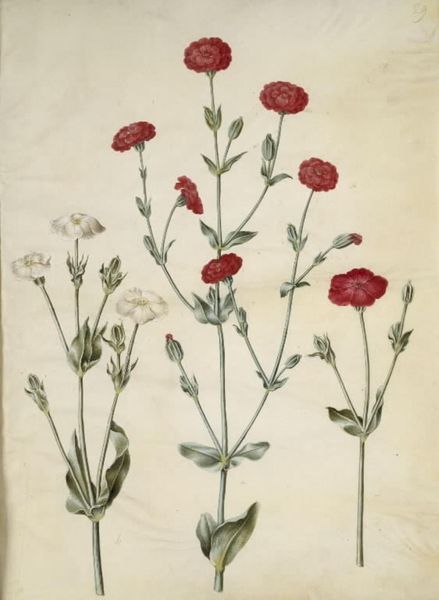
Ranunculus monspeliacus (silke-ranunkel); Ranunculus aconitifolius (stormhatbladet ranunkel) 1649 - 1659
0:00
0:00
drawing, gouache, paper, watercolor
#
drawing
#
gouache
#
paper
#
watercolor
#
coloured pencil
Dimensions: 505 mm (height) x 385 mm (width) (bladmaal)
Editor: Here we have “Ranunculus monspeliacus (silke-ranunkel); Ranunculus aconitifolius (stormhatbladet ranunkel)” crafted between 1649 and 1659 by Hans Simon Holtzbecker. It's a lovely rendering in watercolor, gouache, and drawing on paper. The delicate detail in rendering these plants is pretty stunning. What can you tell us about it? Curator: Well, I am immediately struck by the materiality of this piece. Consider the paper, likely handmade, and the pigments, ground and mixed with a binder – all results of considerable labor. And then there’s Holtzbecker himself: a skilled artisan operating within a specific social context. Did he perhaps produce these studies as part of a larger commission for a wealthy patron's botanical interests, or for the sheer market value of his detailed work? Editor: That's a great point, how his skill and time contributed to this work's inherent value. Did the specific types of materials Holtzbecker used affect his process? Curator: Absolutely. The gouache, watercolor, and even the tools used for drawing dictated the level of detail he could achieve, influencing the labor involved and shaping the image itself. And we mustn't forget the consumption aspect - who purchased these drawings, how were they displayed, and what role did they play in solidifying social status? Were these images ever destined to become prints and disseminated to a wider audience through reproductive technologies? Editor: So, beyond the aesthetic appeal, it really opens up to larger questions about craft, commerce, and class in 17th-century society. Curator: Precisely! By centering the discussion on the means of production, the choices made by Holtzbecker, and the social forces at play, we can truly unravel the meaning embedded in this seemingly simple botanical illustration. Editor: I hadn’t thought of it that way, but looking at it through the lens of material and process really gives it a deeper, richer context. Thanks for sharing that!
Comments
No comments
Be the first to comment and join the conversation on the ultimate creative platform.

